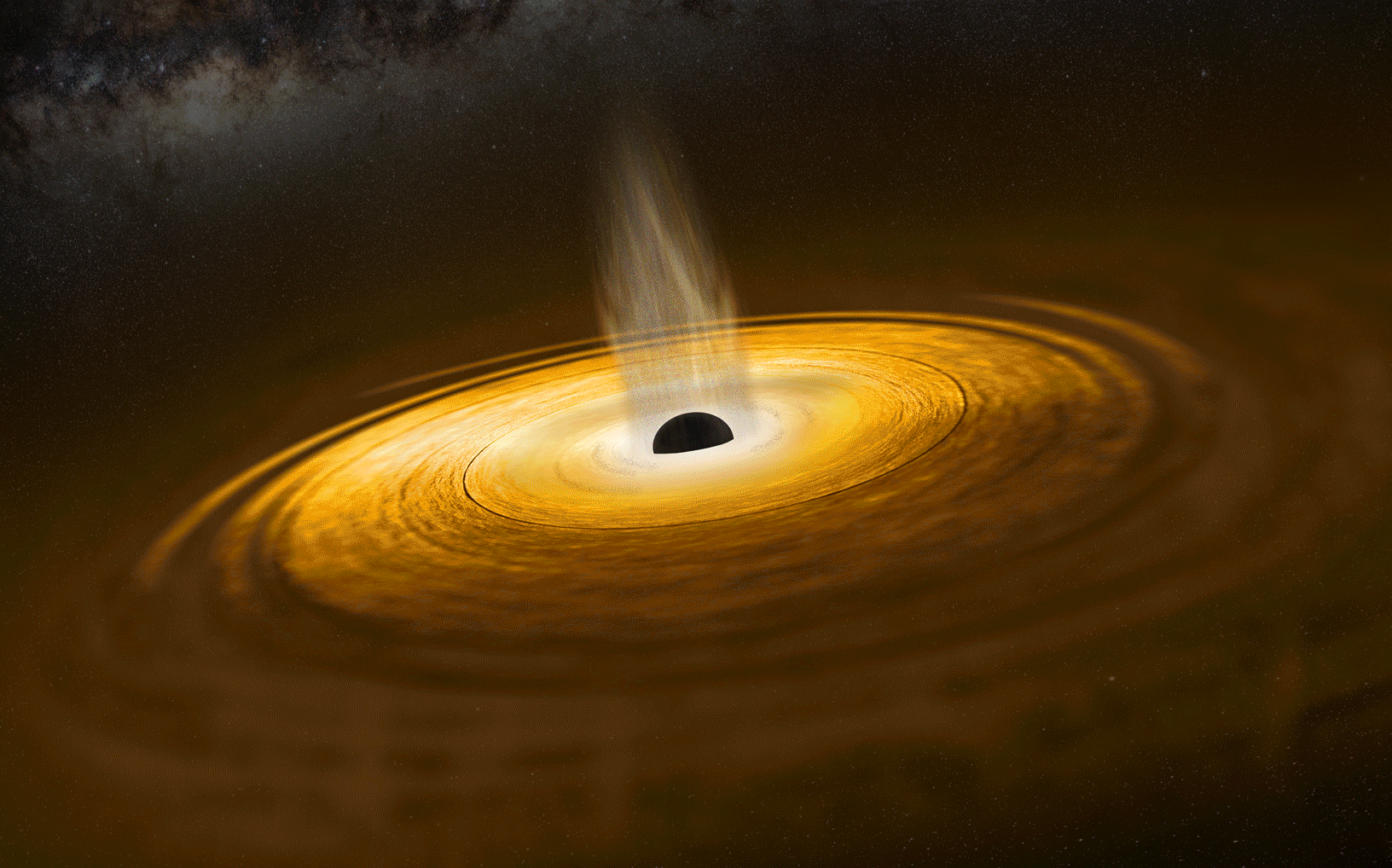11.12.2024

Today, ESA’s powerful X-ray observatory, XMM-Newton, celebrates 25 years in space. From planets to black holes, the space telescope has delivered many ground-breaking observations of a variety of celestial objects. And the mission is still going strong as recent results testify. We take a look at five fascinating discoveries from the last five years.
XMM-Newton was launched on Ariane-5 from ESA’s Kourou space port, on 10 December 1999.
“ESA and its member states had invested a great deal in developing this mission and at the time expectations were very high,” notes ESA Director of Science, Prof. Carole Mundell. “And we were not disappointed: XMM-Newton has rewarded us handsomely with a treasure-trove of exceptional discoveries and continues to surprise us. Its launch marked a turning point for European leadership in X-ray astronomy and we continue to see new generations of scientists asking questions we could not have imagined when the mission was first proposed.”
“The spacecraft’s X-ray telescope is still the largest in terms of collecting area,” adds Norbert Schartel, ESA XMM-Newton Project Scientist. “Thanks to this, the mission can carry out uniquely sensitive observations of some of the most powerful and dramatic events in our Universe, advancing our understanding of the cosmos.”

To celebrate XMM-Newton's 25 years in space we selected five prominent results that the telescope has made possible in the last five years. From the Solar System to remote galaxies, they showcase the power and versatility of X-ray observations. Let’s take a trip through these fascinating findings.
Jupiter’s mystery
Setting off on our journey from the Solar System, we find that XMM-Newton helped to answer a 40-year old mystery: how do X-ray auroras arise at Jupiter’s magnetic poles?
The observations in X-rays of ESA’s telescope combined with measurements by NASA’s Juno mission, enabled astronomers to see the aurora-making mechanism at work, for the first time. As Jupiter rotates and drags its magnetic field, the field is compressed. This heats the particles trapped by the magnetic field which directs them down into the atmosphere of Jupiter, sparking the X-ray aurora.
Scrutinizing neutron stars

In our galaxy, a set of ESA’s XMM-Newton and NASA’s Chandra pioneering observations spurred a new understanding of what happens inside a neutron star. The X-ray observatories spotted three exceptionally young neutron stars that are unusually cold for their age.
Scientists compared the three 'oddballs' with theoretical predictions of how neutron stars could cool down. Since these predictions are linked to the theories of a neutron star’s interior, the comparison can be used to test the theories and to address fundamental questions about a neutron star’s makeup.
Neutron stars get their name from the fact that under their immense pressure, even atoms collapse: electrons merge with atomic cores, turning protons into neutrons. Or do they? Could the extreme pressure give rise to exotic particles? Or possibly melt protons and neutrons together into a swirling quark soup?
Thanks to XMM-Newton and Chandra, scientists were able to reject most theories of the interior of neutron stars. This helps them to focus on fewer ideas and get closer to answering the long-standing puzzle of the state of matter in neutron stars’ cores.
At the edge of a gigantic black hole
In the ‘neighbourhood’ outside our home galaxy, XMM-Newton has shed light on the environments closely surrounding gigantic black holes.
ESA’s XMM-Newton and NASA’s NuSTAR space telescopes observed extremely bright flares of X-ray light coming from around a supermassive black hole. This gravitational ‘monster’ is 10 million times more massive than the Sun and lies at the centre of a spiral galaxy 800 million light-years from Earth.
The telescopes picked up X-ray flares bouncing off the gas falling into the black hole. And also, for the first time, they captured the echoes of these flares reflected by the gas in the disc behind the black hole. By looking at the delays between the primary flares and their echoes, astronomers can create a 3D-map of the black hole surroundings.
Sizing up the ‘monster’

Further out, at 1 billion light-years from Earth, researchers have used XMM-Newton to track these light echoes from the ‘corona’ of a supermassive black hole in the core of an active galaxy. The corona is the cloud of billion-degree gas surrounding the black hole and its dynamics are strongly linked to the characteristics of this gravitational monster.
By watching how light bounced off from the corona scientists were able to track how it changed over time. From this, they could determine the mass and spin of the galaxy’s central black hole with increased accuracy.
Blistering gas sloshing among galaxies

We end our trip through XMM-Newton’s recent discoveries at 240 million light-years away from Earth, in the Perseus cluster of galaxies. For the first time, XMM-Newton captured direct signs that the fiery hot gas dispersed among the galaxies is flowing and sloshing.
The Perseus cluster is one of the most massive known objects in the Universe. It contains hundreds to thousands of galaxies and a huge amount of intergalactic gas at temperatures of around 50 million degrees that shines brightly in X-rays.
Learning more about the motions of intra-cluster gas is key to understanding how galaxy clusters form and evolve. Scientists think that these massive flows may be driven by smaller sub-clusters of galaxies colliding and merging with the main cluster itself.
Looking forward
“These recent results testify to the breadth and depth of research that our X-ray telescope has made possible,” comments Peter Kretschmar, ESA XMM-Newton Mission Manager. “It is extremely gratifying to see how well XMM-Newton has been doing over a quarter of a century, and that it is in excellent shape to continue serving the astronomical community for many more years.”
Crucially, XMM-Newton’s observations also serve to prepare for investigations with ESA’s future large-class mission NewAthena, planned to be the largest X-ray observatory ever built.
So, happy birthday XMM-Newton! We are looking forward to many more years of exciting discoveries.
Quelle: ESA
